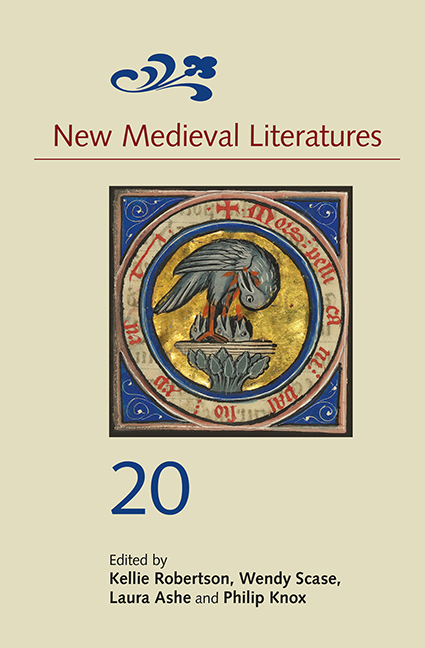Book contents
- Frontmatter
- Contents
- List of Illustrations
- List of Abbreviations
- 1 Lion-Keu-Coupé: A Missing Link in Yvain or Le Chevalier au Lion
- 2 John of Howden’s Rossignos and the Sounds of Francophone Devotion
- 3 ‘Wereyed on every side:’ Chaucer’s Troilus and Criseyde and the Logic of Siege Warfare
- 4 ‘Ave ave ave [ave]:’ The Multilingual Poetics of Exuberance in Bruder Hans
- 5 Performative Typology, Jewish Gender and Jesus’s Queer Romance in the York Corpus Christi Plays
- 6 Locating Charles d’Orléans: In France, in England and Out of Europe
- 7 Urinals and Hunting Traps: Curating Fifteenth-Century Pragmatic Books
6 - Locating Charles d’Orléans: In France, in England and Out of Europe
Published online by Cambridge University Press: 30 April 2020
- Frontmatter
- Contents
- List of Illustrations
- List of Abbreviations
- 1 Lion-Keu-Coupé: A Missing Link in Yvain or Le Chevalier au Lion
- 2 John of Howden’s Rossignos and the Sounds of Francophone Devotion
- 3 ‘Wereyed on every side:’ Chaucer’s Troilus and Criseyde and the Logic of Siege Warfare
- 4 ‘Ave ave ave [ave]:’ The Multilingual Poetics of Exuberance in Bruder Hans
- 5 Performative Typology, Jewish Gender and Jesus’s Queer Romance in the York Corpus Christi Plays
- 6 Locating Charles d’Orléans: In France, in England and Out of Europe
- 7 Urinals and Hunting Traps: Curating Fifteenth-Century Pragmatic Books
Summary
The poetry of Charles d’Orleans (1394–1465) cannot easily be incorporated into the pattern of traditional literary history, which requires that an author's national and linguistic allegiances be identical and exclusive. Born in Paris in 1394, Charles spent the first twenty-one years of his life in France; following his capture at the Battle of Agincourt, in 1415, he spent twenty-five years in England; after his release in 1440 he spent the last twenty-five years of his life back on the Continent. The duke's writing cuts across these temporal divisions. During his English captivity, as well as continuing to write lyrics in French, Charles apparently learned English and began to compose poetry in that language too, sometimes in parallel with his French texts, sometimes in independent work that has no surviving French equivalent. Before his repatriation, the duke oversaw the production of at least two manuscripts of his verse: one book, now London, British Library, MS Harley 682, which brought together his English writings, and another, now Paris, Bibliothèque nationale de France, MS fr. 25458, which collected his French texts. On his return to France, Charles wrote a flurry of new French poems, while, at the same time, he fostered the writing of guests and dependents at his court at Blois; their texts were added to MS fr. 25458, which gradually developed into a sort of logbook recording the poetic conversations that criss-crossed Charles's household. Finally, towards the end of his life, Charles tasked his Italian secretary, Antonio Astesano, to produce another book – now Grenoble, Bibliotheque municipale, MS 873 – that would memorialize his French verse by presenting it alongside a parallel Latin translation. The careful organization and decoration of the Grenoble manuscript make manifest the literary ambitions of a man for whom writing poetry was a life-long pursuit and whose identity as a poet and as the anthologist of his own verse formed a cornerstone of his princely self-presentation.
In this chapter, I reflect on the expression that Charles's transnational, trans-linguistic identity achieves in his French and English poetry.
- Type
- Chapter
- Information
- New Medieval Literatures 20 , pp. 174 - 215Publisher: Boydell & BrewerPrint publication year: 2020



